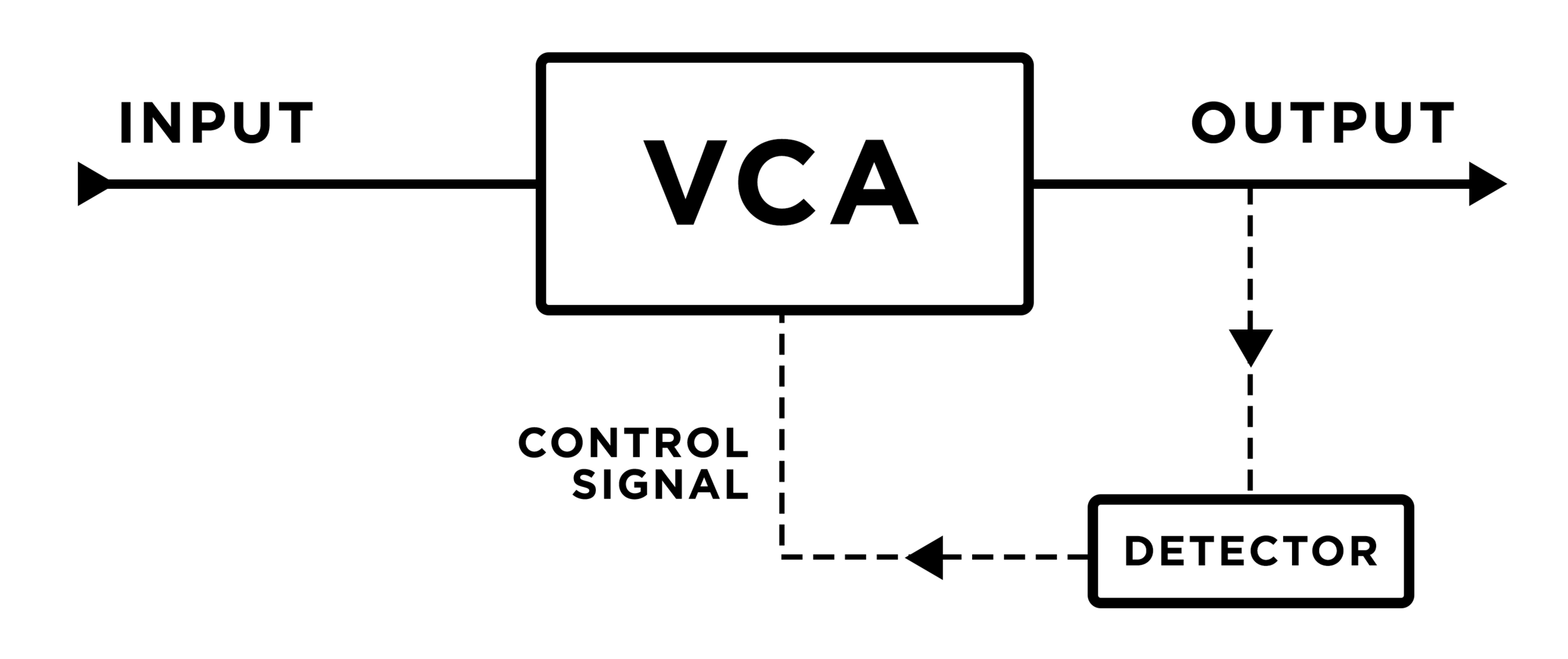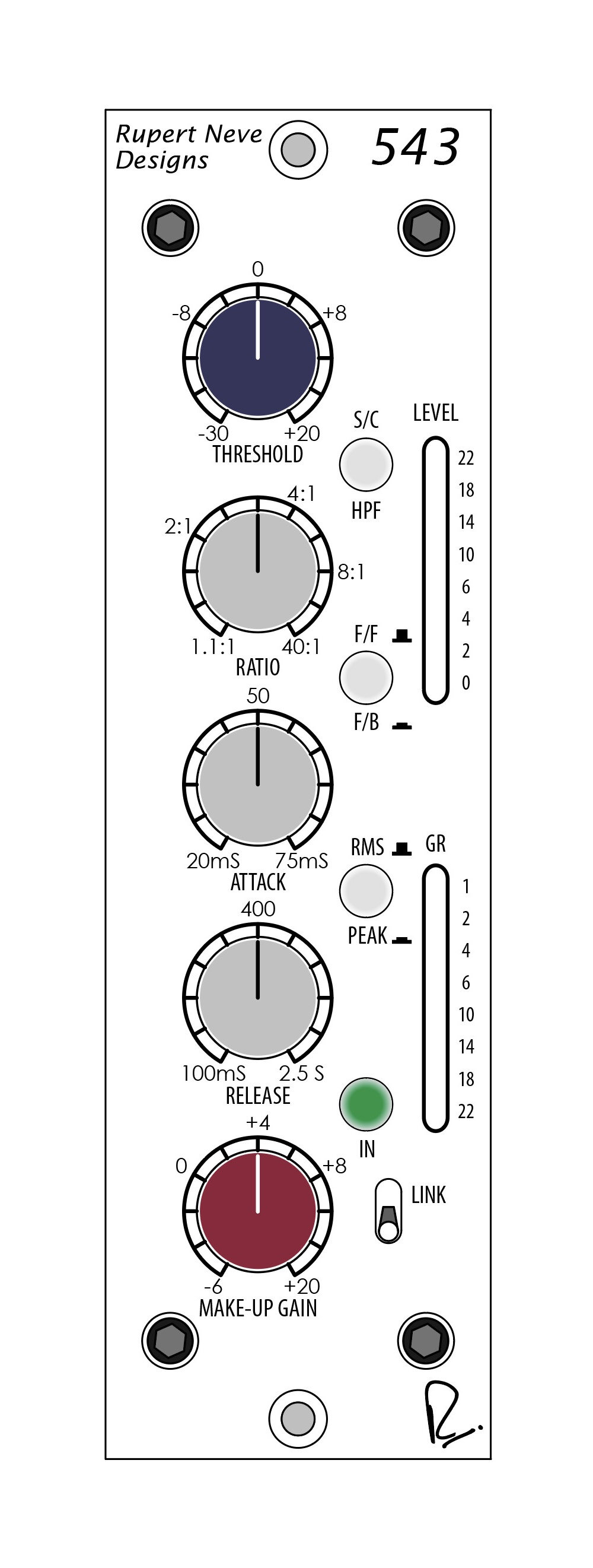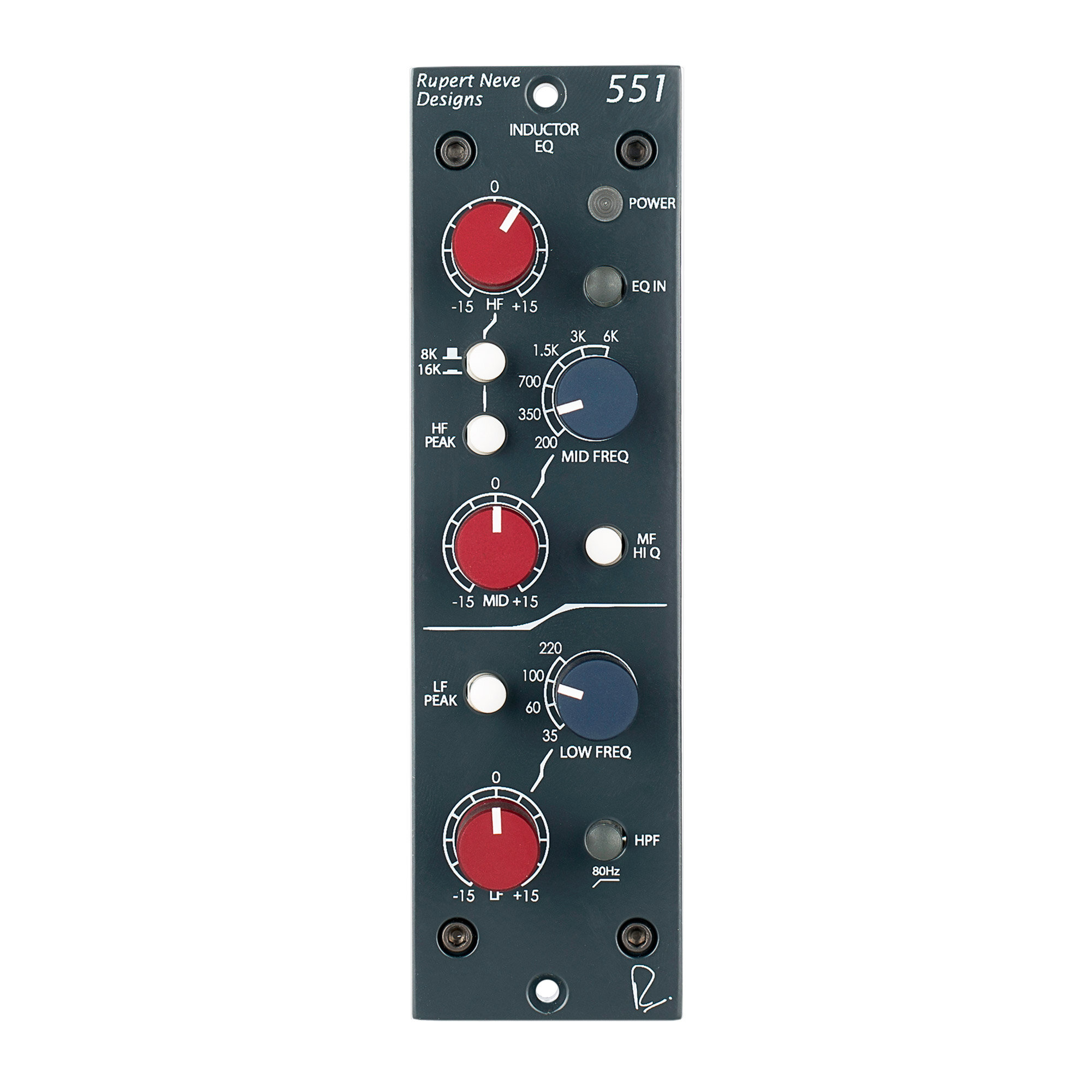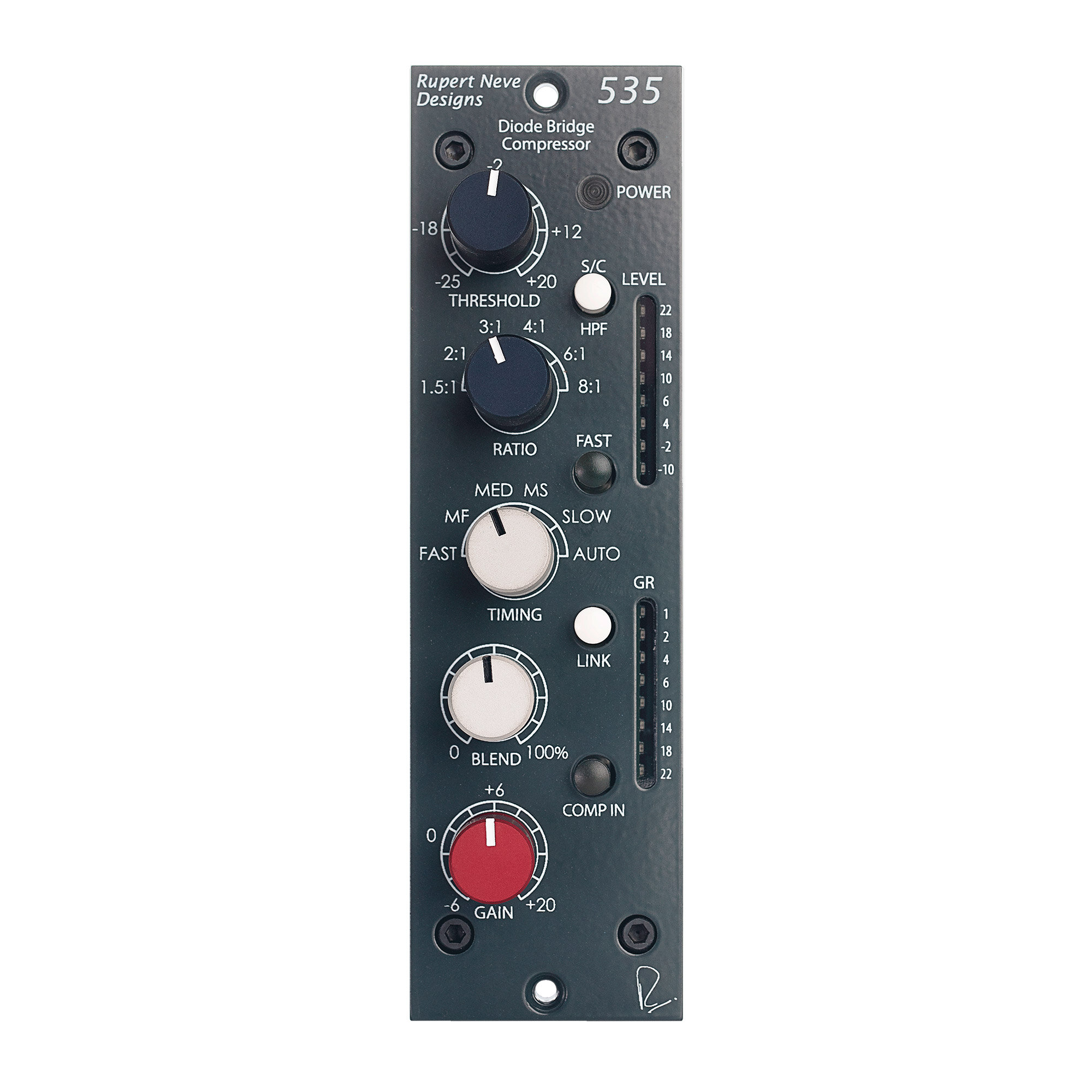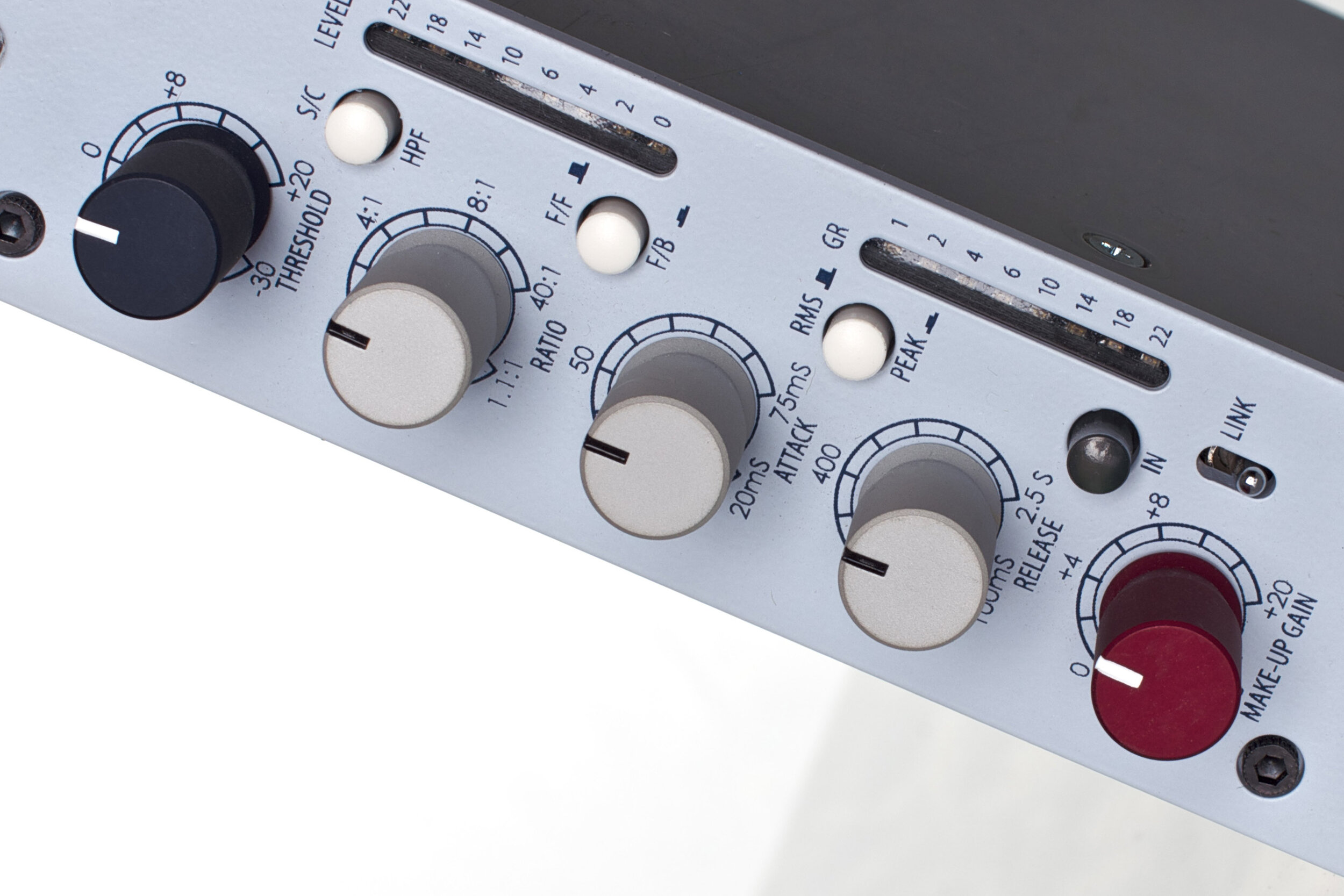
543
500 Series Compressor
OVERVIEW / MEDIA / FEATURES / REVIEWS / SPECS & RESOURCESClean, precise, powerful level control.
Whether you’re tracking, mixing or mastering, the 543 delivers unobtrusive, musical dynamic control and high-ratio limiting with massive flexibility, transparency and precision.
“...perhaps the single most transparent compressor I have ever used.”
The 543 features a fully controllable compressor-limiter with feed-forward / feedback modes, Peak / RMS detection and a built-in side chain high pass filter. With an unrivaled heritage and a tremendous feature set, the 543 provides an astonishing degree of flexibility and precision.
What is VCA compression?
Every compressor has a gain control element in its circuit, and this is generally what determines the “sound” of the compressor. Some compressors use tubes, some use FETs, some use light-dependent resistors, some use a diode bridge – but in the 543, a VCA (Voltage Controlled Amplifier / Attenuator) is used to control the signal’s gain.
In contrast to a diode bridge design like our 535 compressor, which adds a thick, very colorful tonality to the source, the 543 makes use of a very accurate, low noise, low distortion VCA. This provides an immense amount of dynamic control and subtle warmth, without necessarily leaving a heavy sonic imprint on your tracks or mixes.
FEED-FORWARD
FEED-BACK
Feed-Forward or Feed-Back?
This switch changes the point in the signal path where the VCA control voltage is picked off: either before the VCA (feed-forward) or after the VCA (feed-back).
In most of Mr. Neve’s earliest designs, feed-back detection was intrinsic to the musical dynamic response. However, the very nature of a feedback compressor limits the attack time of the compression circuit, as the control voltage has already passed through the VCA itself. To offer faster, more technically accurate response times, feed-forward detection was also implemented in the 543: with the FF / FB switch, both classic and modern VCA responses are available.
RMS or Peak?
Another highly useful features of the 543 is the Peak / RMS mode, which allows the VCA to respond to both RMS (Root Mean Square) and peak levels. RMS circuits are considered to better mimic the way the ears perceive apparent loudness, while peak circuits tend to directly respond to the waveform voltage, which may be more of a concern for prevention of clipping and maximizing levels.
In the case of this particular circuit, peak mode actually uses a combination of both methods to get the best of both worlds, and avoids the drawbacks of each method on its own.
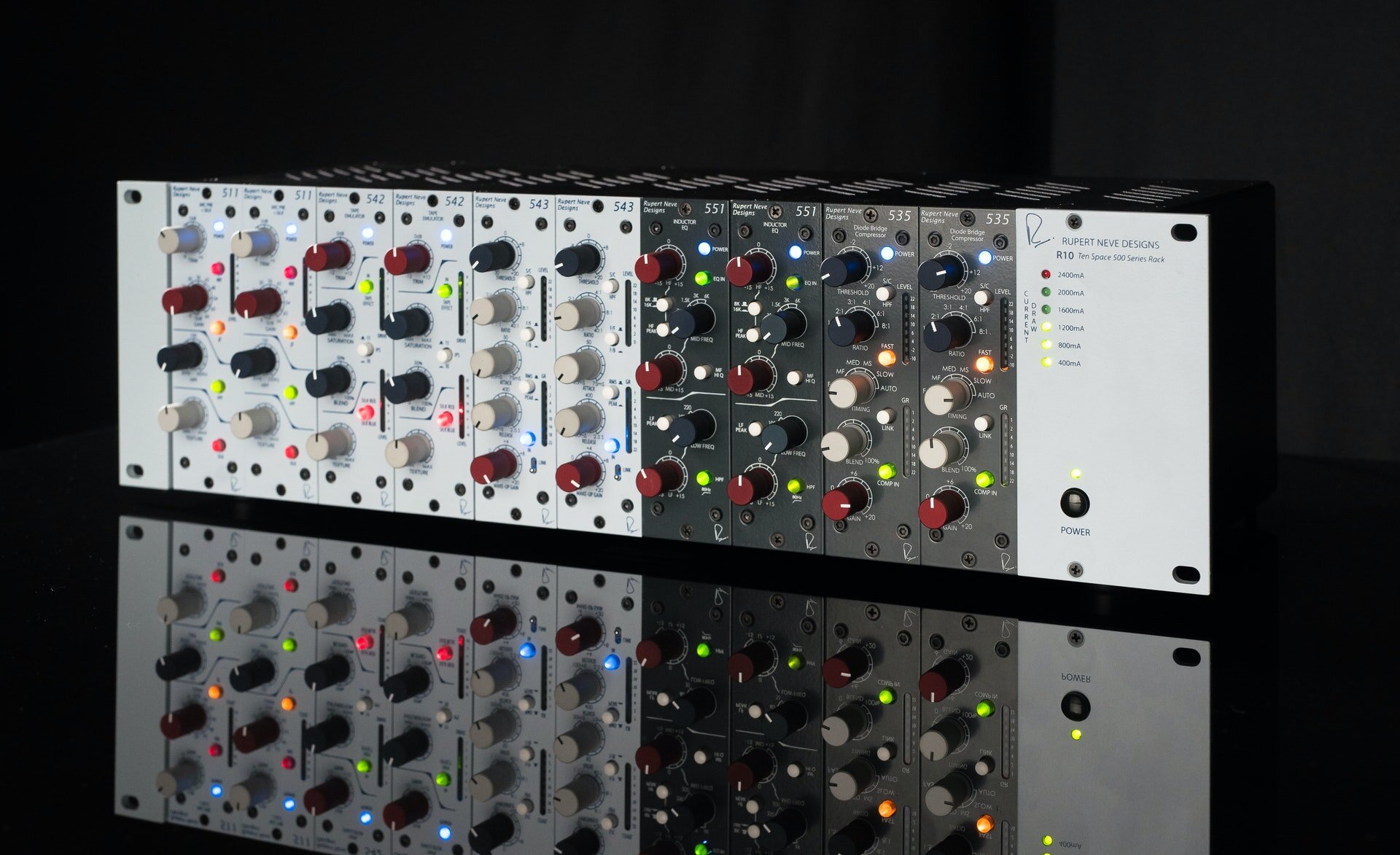
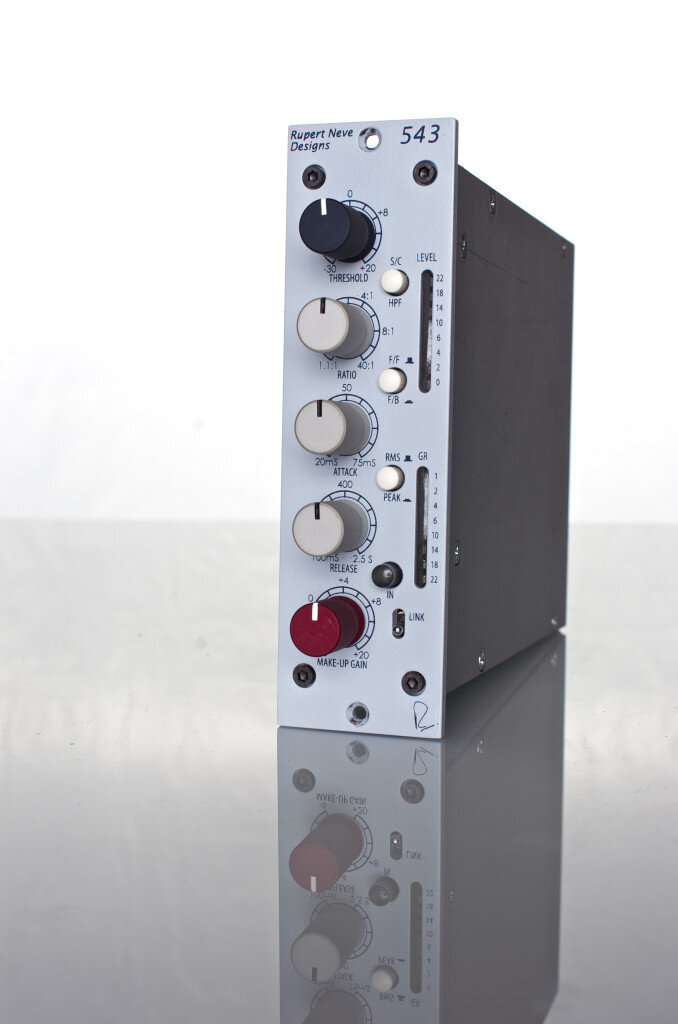
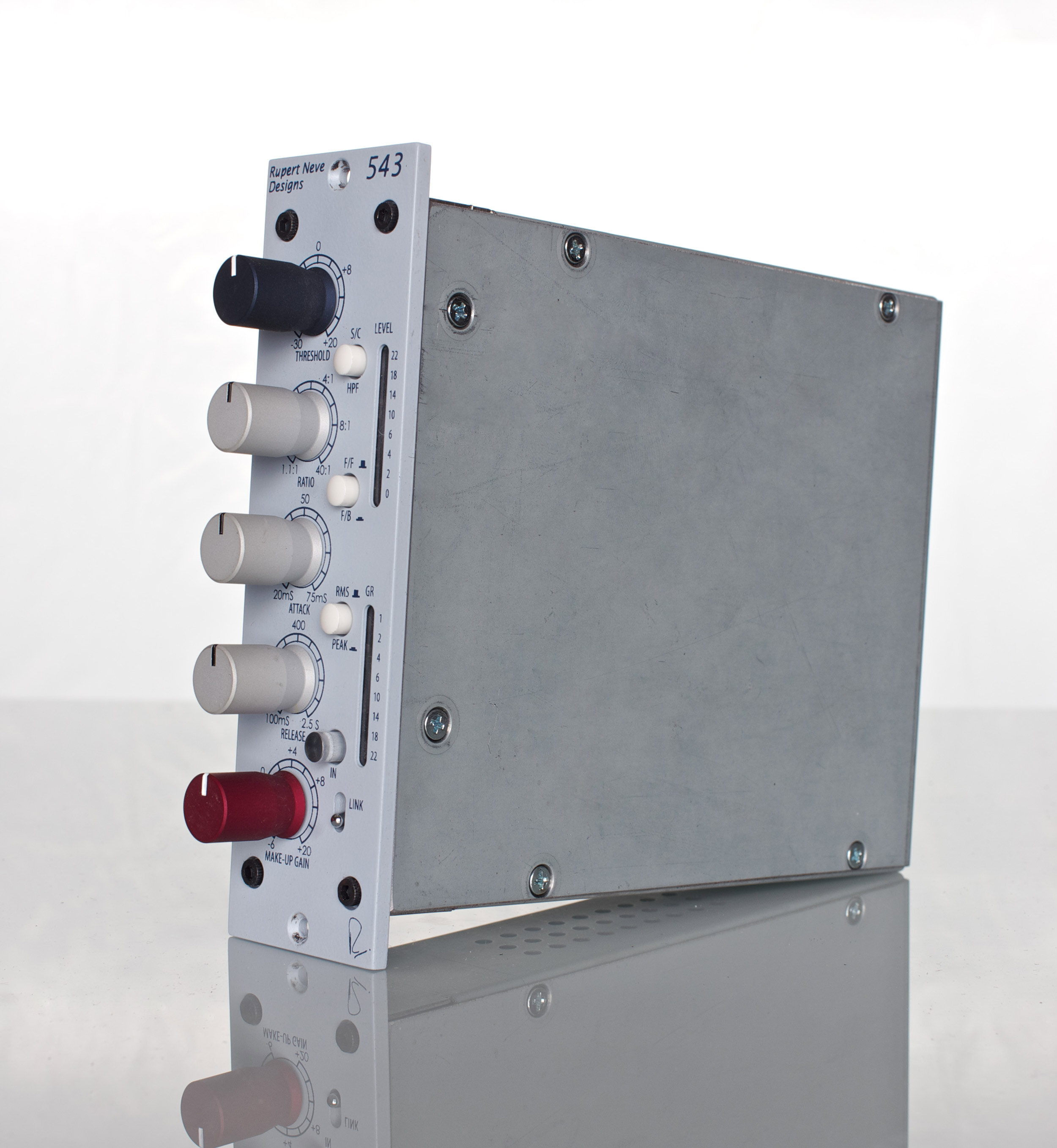
THRESHOLD
Controls when the compressor begins to react from -30 dB to +20 dB. When set to +20 dB minimal to no compression is applied and and more gain reduction as the knob is rotated towards -30 dB.
RATIO
Controls the “slope” of the compression from 1.1:1 (minimal) to 40:1 (Limit). In general, low ratio settings apply more subtle compression while high ratio settings can be more effective at preventing unwanted clipping.
COMP IN
Illuminated push-button switch that engages the compressor.
F/F + F/B
Push-button switch that toggles between two different compressor modes, FEED FORWARD and FEED BACK. The F/B mode (button in) tends to sound smoother and more natural. The F/F mode can be more useful for shaping the envelope of the sound and introducing more ‘pumping’, if desired.
MAKE-UP GAIN
Continuously variable control for the make-up gain of the compressor within a range of -6 dB to +20 dB.
ATTACK
Controls how quickly the compressor reacts and starts attenuating. Continuously variable within a range of 20mS to 75mS.
RELEASE
Controls how quickly the compressor stops applying gain reduction. Continuously variable within a range of 100mS to 2.5 Seconds.
RMS/PEAK
Push-button switch that toggles between the compressor responding to the RMS level of the audio or responding to the PEAK level. RMS (root mean squared) more accurately mimics the way the ears perceive apparent loudness, while PEAK directly responds to the waveform voltage, which may be more useful to prevent clipping and maximize levels.
S/C HPF
Push-button switch that engages the high pass filter (fixed at 250Hz) for the side chain of the compressor. Please note that the high pass filter is not applied to the main audio output, this only adjusts the frequency range of the signal being compressed..
LINK
Switch that engages the stereo compressor link mode, linking the gain reduction circuits to work in tandem.
REVIEWS
“To say that the Portico 543 does not overtly colour the sound is to be guilty of gross understatement. In fact, I found this to be perhaps the single most transparent compressor I have ever used. The source signal retained remarkable fidelity and coherence under all but the most extreme settings in both limiting and compression roles.”
Greg Walker / Audio Technology
“…it delivered exactly what I needed every time without fuss or hassle, and the versatility of the two sidechain modes is a major bonus.”
Hugh Robjohns / Sound On Sound
“OUTSTANDING! I began my recording career back in the summer of 1969. I have used all the great comps between then and now. This is simply the best VCA compressor I've ever used, period!!…I ended up with five in my lunchbox!”
“Smoooooooth.....Excellent, smooth, warm, professional quality, vintage tone. I expect nothing less form Rupert Neve Designs.”
“BEST 500 SERIES COMPRESSOR. Not gonna say much about this purchase, only that the name and product speaks for itself. Go to your nearest pro gear vendor and listen and believe.”
“In all, RND's 543 is by far the most transparent compressor we've ever heard to date. It's not unlikely that one would fill a whole 500 series rack full of 543s.”
Customer Reviews via sweetwater.com

SPECIFICATIONS & DOWNLOADS
GAIN RANGE
Continuously variable from -6 dB to +20 dB
THRESHOLD RANGE
Continuously variable from -30 dB to +20 dB
RATIO RANGE
Continuously variable from 1.1:1 to Limit (40:1)
ATTACK RANGE
Continuously variable from 20mS to 75mS
RELEASE RANGE
Continuously variable from 100mS to 2.5 Seconds
TOTAL HARMONIC DISTORTION AND NOISE
@ 1 kHz, 0 dBu output level, no load.
Main Output, compressor bypassed: Better than 0.002%
@ 20 dBu better than 0.0015%
Main output, compressor engaged: Better than 0.075%
NOISE
Measured at Main Output, un-weighted, 22 Hz - 22 kHz, Terminated 50 Ohm.
With Gain at Unity, Compressor disengaged: Better than -98 dBu
With Gain at Unity, Compressor engaged: Better than -93 dBu
FREQUENCY RESPONSE
Main Output, Unity Gain: @ 150 kHz -3 dB
METERS
For monitoring OUTPUT LEVEL and GAIN REDUCTION
LINE INPUT IMPEDANCE
10,000 Ohms
MAXIMUM OUTPUT LEVEL
21 dBu from 20 Hz to 40 kHz
POWER REQUIREMENTS
500 series rack with 110-125 mA @ +/- 16V
FREQUENTLY ASKED QUESTIONS
Yes, all of our modules are designed within the 500 Series specification and we are not aware of any instances where they have not worked as intended.
The 535 is a diode bridge compressor, where the 543 is a VCA compressor. VCA designs are generally used for precise, clean level control and maximum transparency; great for general purpose use. A diode bridge design is more colorful, with lots of vibe and personality – great for adding thickness, weight, and warmth to tracks or mixes.
Absolutely. Just use two 543s together for L-R signals.
Yes, you can link the VCAs of two 543s with the R6 or R10 racks if the Link jumper is enabled for the pair of channels. Other brands of 500 Series rack may or may not include link functionality, so you should check with their manufacturer for specifics.
Keep in mind that you still need to set both units to trigger equally (i.e. front panel settings should be the same), and also that some tracks may sound better using dual mono compression rather than linked stereo. We recommend you listen to both linked and unlinked signal paths, paying attention to stereo imaging and apparent “width”, and make your own decision.
The 543 is a very similar compressor to the Master Buss Processor. The primary differences are in the overall feature set, and the lower voltage operation inherent to the 500 series.
We utilize an electrogalvanized chassis to shield the internal circuitry from interference. With this process, it isn’t possible to “finish” the chassis metal (i.e. polishing or anodizing) so the machining marks from forming the metal will be visible. In normal operation inside a 500 series rack, this metal will never be visible.
We use standard 4-40 ¼" screws to secure our 500 series rack modules. Each of our modules and our R6 and R10 racks include these screws. Please contact our service department if you have questions or need additional screws.




